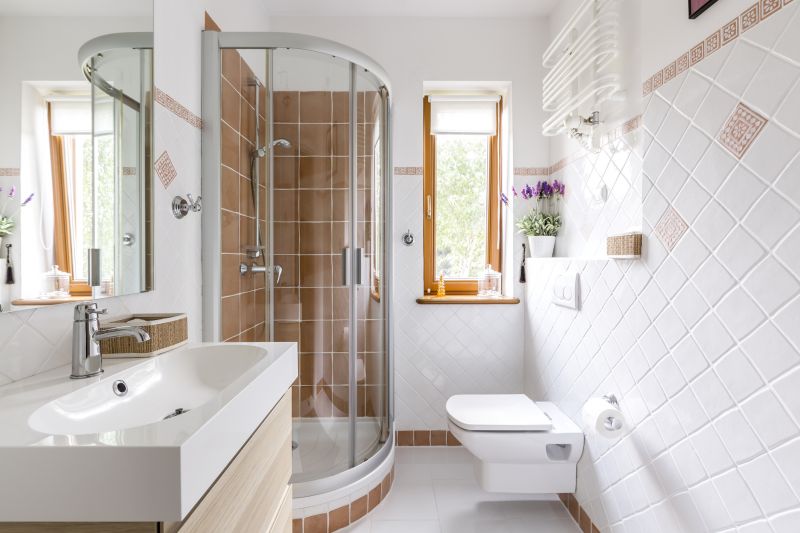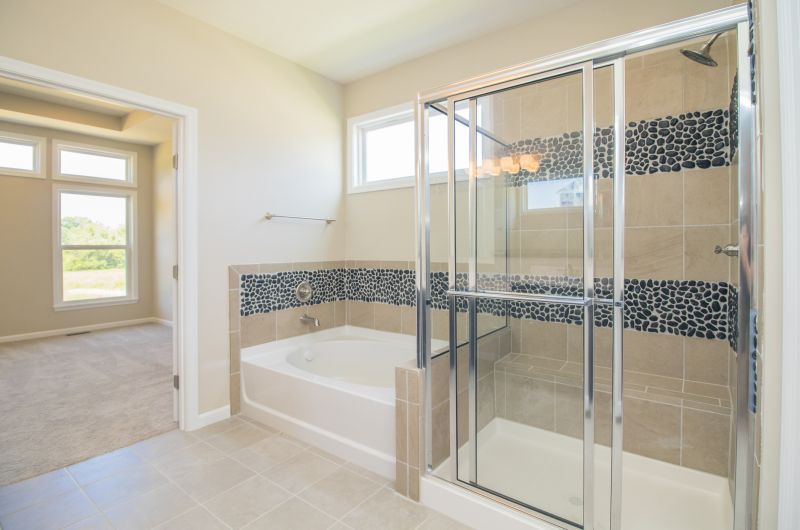Design Tips for Small Bathroom Shower Areas
Corner showers utilize often underused space, making them ideal for small bathrooms. They can be designed with sliding or hinged doors, offering flexibility in space management and ease of access.
Walk-in showers create a seamless look that opens up the bathroom visually. They often feature frameless glass and minimalistic fixtures, enhancing the perception of space.




| Shower Type | Advantages |
|---|---|
| Corner Shower | Maximizes corner space, suitable for small bathrooms |
| Walk-In Shower | Creates an open, spacious feel, easy to access |
| Recessed Shower | Built into wall for saving space |
| Shower with Folding Door | Flexible entry that saves room |
| Neo-Angle Shower | Fits into awkward corners efficiently |
Choosing the right shower layout in a small bathroom involves balancing space efficiency with style. Corner showers are popular for their ability to utilize corners, freeing up more central space for other fixtures. Walk-in designs, with their frameless glass and minimal hardware, contribute to an open and airy environment. Recessed showers are built into the wall, eliminating the need for additional space and making them ideal for tight layouts. Sliding or folding doors further optimize space by reducing the clearance needed for entry. Each layout option offers unique benefits suited to different bathroom configurations and personal preferences.
Incorporating smart storage solutions within small shower spaces can enhance functionality without cluttering the area. Niche shelves, corner caddies, and built-in benches help keep toiletries organized while maintaining a clean appearance. Materials such as large tiles or clear glass can also contribute to a sense of openness, making the bathroom feel larger than it is. Lighting plays a crucial role as well; bright, well-placed fixtures can illuminate the space effectively, highlighting design features and creating a welcoming atmosphere.




